Meet the original users of they/them pronouns in the Bible: demons, whose collective identity challenges our understanding of ancient texts.

Demons in the Bible Refer to Themselves as They/Them
You've probably never thought of ancient biblical demons as trendsetters in the use of they/them pronouns, but this linguistic quirk might just change your perspective on scriptural narratives. When demons in the Bible speak of themselves, they often use 'we' or 'us,' hinting at a collective identity that's intriguing to both theologians and linguists alike.
This choice of pronouns raises compelling questions about the nature of these entities and their representation in sacred texts. By exploring this phenomenon, you'll uncover layers of meaning that could shift how we understand demonology and its implications for contemporary discussions on identity and personhood.
What might these ancient choices tell us about the beings that lurk in the pages of religious texts?
Key Takeaways
- Ancient texts use gender-neutral and plural pronouns for demons, reflecting their collective identity.
- The choice of 'they/them' underscores demons' interconnectedness and the concept of evil as a unified force.
- Pronoun usage in biblical demonology challenges traditional views on individualized evil, suggesting a broader interpretation.
- Linguistic analysis reveals how cultural beliefs impact the depiction of demonic entities and their hierarchical structure.
The Linguistic Context
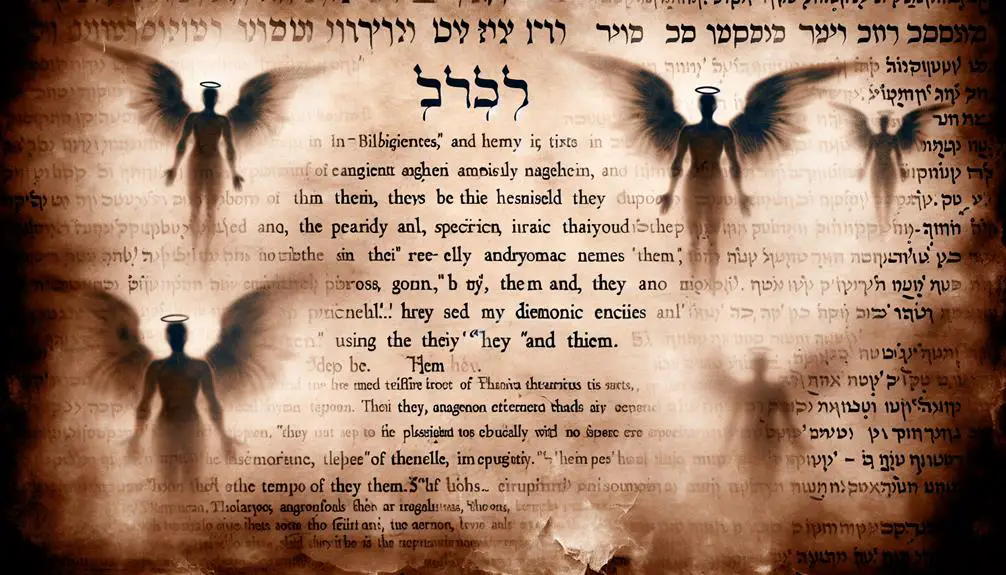
In exploring the linguistic context of pronouns used for demons in the Bible, it's crucial to understand that ancient languages often employed gender-neutral terms differently than modern usage. Pronoun origins in these texts are rooted in a cultural understanding of entities that transcended human gender binaries. This complexity presents significant translation challenges for scholars.
You'll find that the original Hebrew and Greek texts of the Bible use pronouns in ways that don't always align with contemporary English expectations. For instance, Hebrew, a language with gendered nouns and pronouns, sometimes applies masculine or feminine pronouns to demons based on the grammatical gender of the noun, not the implied gender of the being. Similarly, Greek, with its own set of gendered pronouns, occasionally uses neuter terms when referring to demons, further complicating direct translation into English.
These nuances highlight the importance of careful linguistic analysis in translating ancient texts. You're dealing with languages that structure gender very differently from modern English, making it challenging to find equivalent pronouns that accurately convey the original meaning. Understanding these complexities is essential for grasping the true nature of the entities described in biblical texts, beyond the oversimplifications that modern interpretations might offer.
Instances of Collective Identity
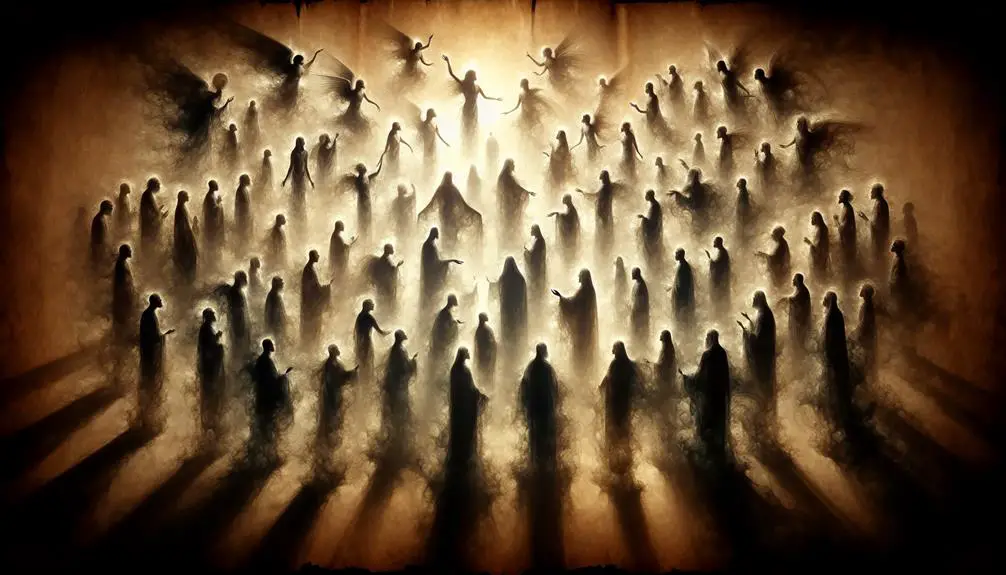
Why do biblical texts often depict demons as possessing a collective identity, and what implications does this have for their portrayal?
Biblical literature frequently presents demons not as solitary beings but as entities with a shared consciousness or purpose. This collective identity is significant for several reasons, particularly in understanding the demon hierarchy and cultural interpretations of these spiritual entities. The portrayal of demons using collective pronouns like 'they/them' underscores several key points:
- It suggests a hierarchical structure within the demonic realm, where multiple entities may act under the direction of a more powerful leader.
- It reflects ancient cultural beliefs about the spiritual world, where forces of evil were often seen as united in their opposition to humanity and the divine.
- The use of collective identity highlights the perceived strength and threat of demonic forces, suggesting that they're more formidable when acting as a group.
- It allows for a broader interpretation of demonic influence, encompassing various manifestations and actions that could be attributed to a single source or multiple entities working in concert.
This collective portrayal raises intriguing questions about the nature and organization of demonic entities within biblical texts and how these views have influenced subsequent religious thought and cultural interpretations.
Implications for Theology
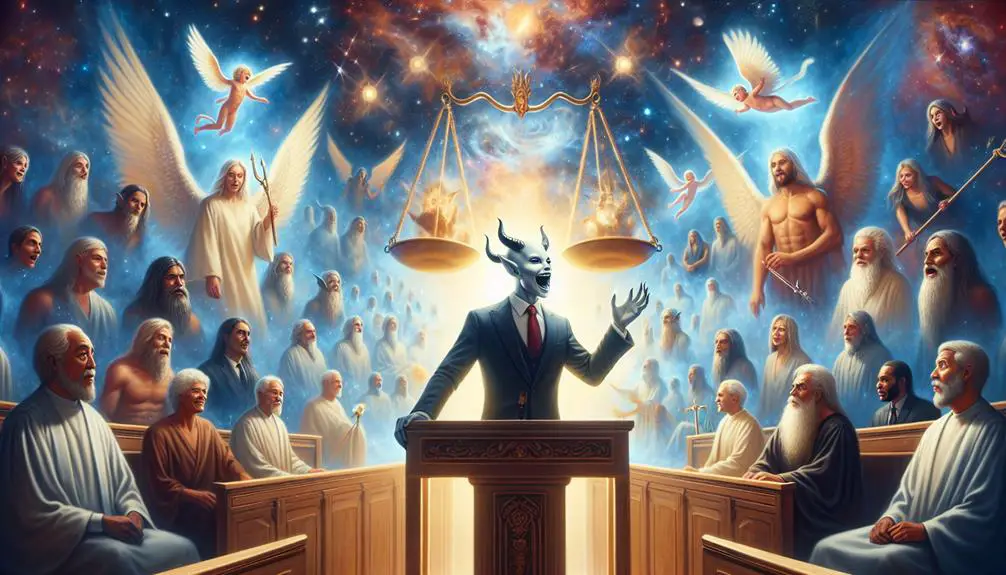
The depiction of demons with a collective identity in biblical texts significantly influences theological discussions regarding the nature of evil and its operation within the world. This portrayal, particularly through the use of gender-neutral pronouns, prompts a reevaluation of traditional perspectives on demonic entities. You must consider how gender neutrality in biblical interpretation impacts the understanding of these spiritual beings. Rather than viewing demons through a lens of individuality and gender specificity, the collective 'they/them' suggests a unified force of malevolence, challenging conventional notions of singular, gendered evil.
Furthermore, this depiction raises questions about the fluidity and ambiguity inherent in spiritual entities, suggesting that evil operates as a collective, rather than emanating from distinct, individual sources. You're encouraged to explore how these interpretations align with broader theological concepts such as the universality of sin and collective redemption. The emphasis on a collective identity among demons in biblical texts urges a nuanced approach to biblical interpretation, where the focus shifts from the individual characteristics of evil to its collective presence and influence. This perspective not only enriches theological discourse but also prompts a reexamination of the foundational beliefs regarding the nature and manifestation of evil in the world.
Symbolism in Pronoun Use
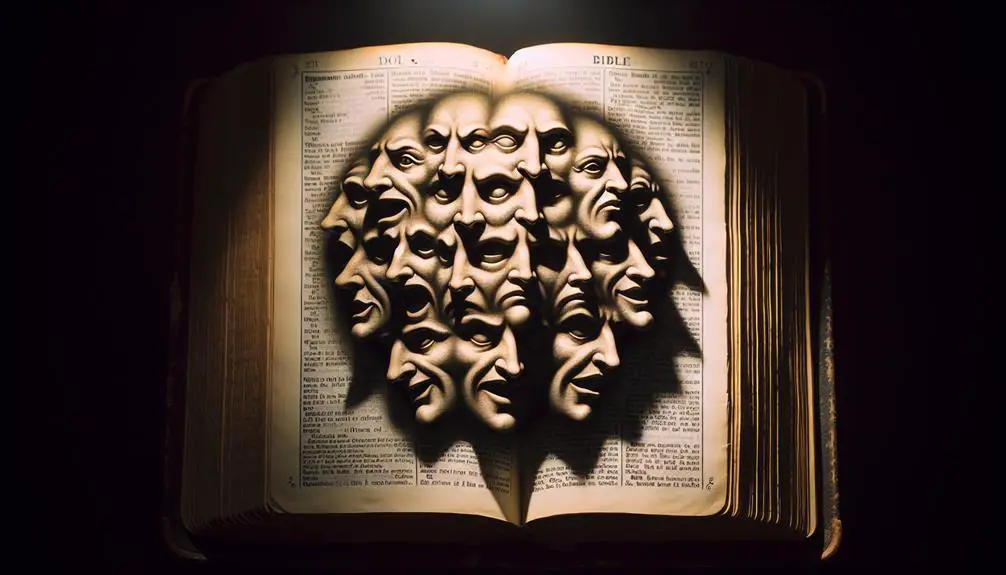
Exploring the symbolism behind the use of pronouns in biblical texts about demons offers a deeper understanding of their collective nature and the complexities of evil they represent. The choice of 'they/them' pronouns isn't random but reflects a deliberate linguistic strategy with profound implications. You'll find that pronoun origins and their cultural implications play a pivotal role in how we interpret these entities within religious texts.
- Pronoun origins: Tracing back to ancient languages, the use of 'they/them' pronouns for demons emphasizes a non-singular, collective identity, suggesting a legion rather than an individual entity.
- Cultural implications: This choice mirrors societal views on the multifaceted nature of evil, portraying demons as a unified force of malevolence.
- Collective identity: The plural form highlights the interconnectedness among demons, suggesting a shared purpose or consciousness.
- Complexities of evil: It underscores the layered and complex nature of what's considered 'evil', challenging simplistic interpretations.
Understanding these aspects allows you to appreciate the nuanced way in which religious texts communicate themes of morality, identity, and existence. The symbolism woven into the pronoun use provides insights into the ancient world's perceptions of good, evil, and the unseen forces influencing human life.
Reevaluating Demonology
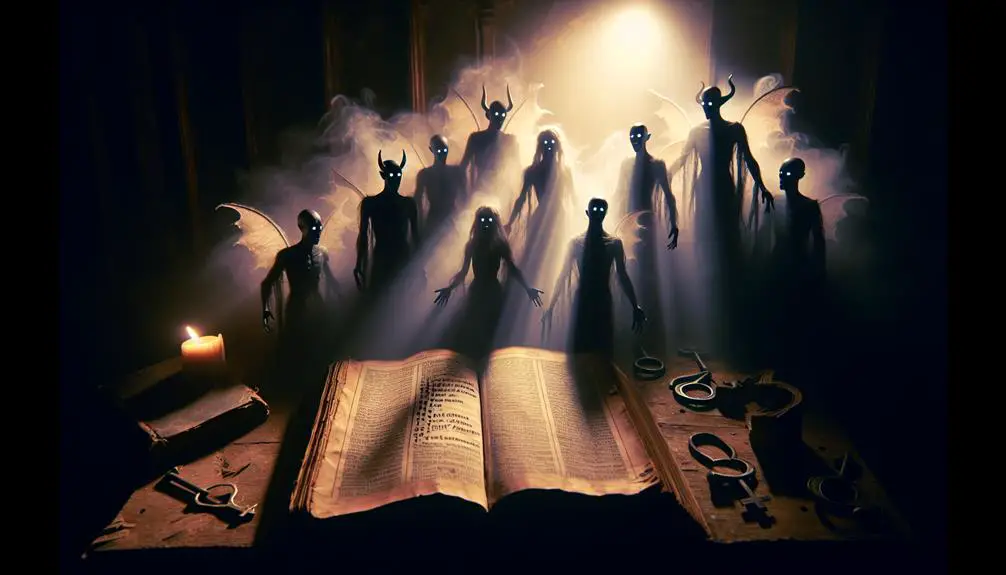
In reevaluating demonology, it's crucial to understand how historical interpretations have shaped our modern perceptions of demons and their roles in religious narratives. The concept of a demon hierarchy, for instance, isn't merely a product of ancient imagination but a complex structure influenced by cultural interpretations and theological debates. This hierarchical system, often outlined in religious texts, reflects not only the perceived power dynamics among demons but also the societal values and fears of the times.
As you delve deeper, you'll notice that these cultural interpretations have left an indelible mark on how demons are portrayed. In some cultures, demons are seen as malevolent entities, constantly at odds with the forces of good. In others, they're more nuanced characters, capable of both good and evil, reflecting the dual nature of humanity itself. This diversity in portrayal underscores the importance of context in demonology. It's not merely about cataloging various demons but understanding their roles within the fabric of each culture's spiritual and moral landscape.
Frequently Asked Questions
How Do Modern Translations of the Bible Address the Use of They/Them Pronouns for Demons, and Have These Translations Sparked Any Controversies?
In modern Bible translations, the methodology around pronoun significance, particularly for non-human entities, varies. These translations often spark debates over accuracy and interpretation.
You'll find that controversies arise when scholars and religious communities discuss the implications of using 'they/them' pronouns for demons.
The crux of the issue lies in whether these choices reflect original texts or adapt to contemporary language norms, challenging traditional understandings and leading to analytical discussions.
Are There Any Historical or Cultural Reasons Why Demons in the Bible Might Refer to Themselves Using They/Them Pronouns, Outside of the Linguistic and Symbolic Explanations?
You're diving into how pronouns have evolved in ancient languages, particularly focusing on singular they/them usage. This exploration isn't just linguistic; it's deeply rooted in historical and cultural contexts.
Ancient texts, including religious scriptures, often reflect the society's collective mindset and beliefs. So, when you're examining this pronoun evolution, you're also uncovering layers of societal norms, perceptions, and possibly even the ancient understanding of identity and plurality.
How Does the Use of They/Them Pronouns for Demons in the Bible Compare to the Depiction of Angels or Other Spiritual Beings in Terms of Pronoun Usage?
Imagine navigating a celestial hierarchy where each being has a distinct role.
Now, when you compare angels to demons in pronoun usage, you'll find a fascinating consistency. Angels, often depicted within a structured hierarchy, typically adhere to singular pronouns reflecting their individual roles.
In contrast, the depiction of demons doesn't always follow this pattern, making their pronoun usage, especially the use of they/them, stand out amidst the angelic order.
Has the Interpretation of Demons Referring to Themselves as They/Them Influenced Contemporary Religious or Spiritual Practices and Beliefs About Gender Identity?
You're exploring if interpretations of pronoun use for demons have impacted modern views on gender identity and religious practices. It's crucial to consider how these reflections on pronoun evolution and gender politics shape your understanding.
While direct influences might be nuanced, the broader discussion around pronouns in sacred texts informs contemporary debates on gender fluidity. It encourages a reevaluation of traditional gender norms within spiritual contexts, offering a more inclusive approach.
Are There Examples in Other Religious Texts Outside of the Bible Where Demons or Equivalent Entities Use They/Them Pronouns, and How Do These Instances Compare?
You're diving into demon linguistics and cultural perceptions by exploring other religious texts for instances where demons or their equivalents use they/them pronouns.
This comparison reveals fascinating insights into how different cultures and religions view these entities, not just as spiritual beings but also through the lens of gender identity.
Analyzing these examples sheds light on broader societal attitudes and may influence contemporary discussions around gender and spirituality.
Conclusion
In analyzing the linguistic context and instances where demons in the Bible refer to themselves using they/them pronouns, you've uncovered layers of collective identity, prompting a theological reevaluation. This symbolism in pronoun use not only challenges traditional perspectives on demonology but also invites a broader understanding of biblical narratives.
By embracing these insights, you're encouraged to consider the complexity of spiritual entities and their representation, enriching your comprehension and appreciation of sacred texts. Through this scholarly exploration, the essence of biblical demonology is both questioned and deepened.

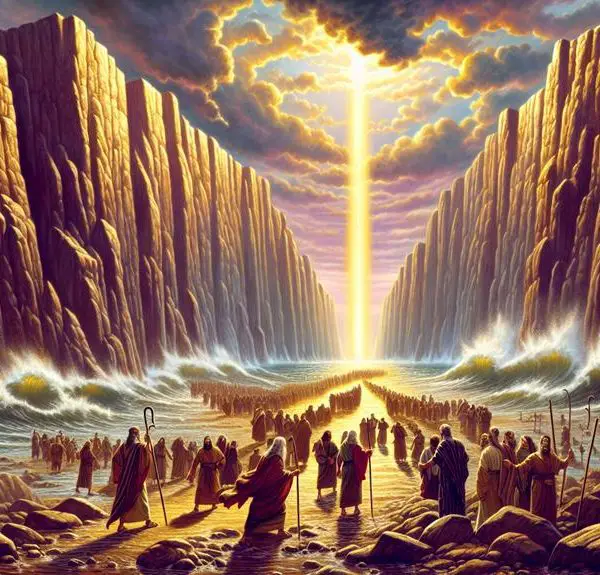

Sign up